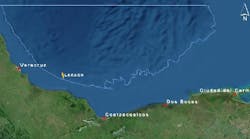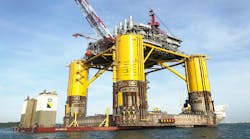Offshore staff
CHESTERFIELD, UK – Cathelco says it will supply corrosion protection systems for the second stage of Lukoil’s Vladimir Filanovsky project in the Russian sector of the Caspian Sea.
The impressed current cathodic protection (ICCP) systems have been designed to operate in the harsh conditions, including sea ice.
One of the systems will protect the foundations of the ice-resistant stationary platform IRP-2. This will be used to drill 15 directional wells with horizontal borehole completions (nine production and six injector wells).
The other ICCP system is destined for the LQP-2 accommodation platform that will house 55 people and include a helicopter pad.
Cathelco earlier installed ICCP systems on the first-phase V.Filanovsky riser platform (RB1), accommodation unit (PGM-1), and the ice-resistant fixed platform (IRFP-1).
The anodes are designed to be ice-resistant, changed by a diver, and easily integrated with the structural arrangement of the platform.
To ensure the ICCP comply with corrosion protection requirements of the structure for 35 years, the company designed high strength cofferdams and special angled doubler plates that deflect ice away from the recessed anodes.
To achieve the required wear resistance, the current emitting faces of the anodes are made from mixed metal oxide with a thickness three or four times greater than conventional anodes, Cathelco claims.
Additionally, the low salinity in this part of the Caspian Sea leads to higher seawater resistivity, necessitating a higher driving voltage for the anodes to achieve the necessary level of corrosion protection.
When the ICCP system is in operation, the reference electrodes measure the electrical potential at the hull/seawater interface and relay a signal to the control panel, which automatically raises or lowers the output to the anodes. This way, the structure receives optimum corrosion protection at all times, the company says.
01/08/2015




